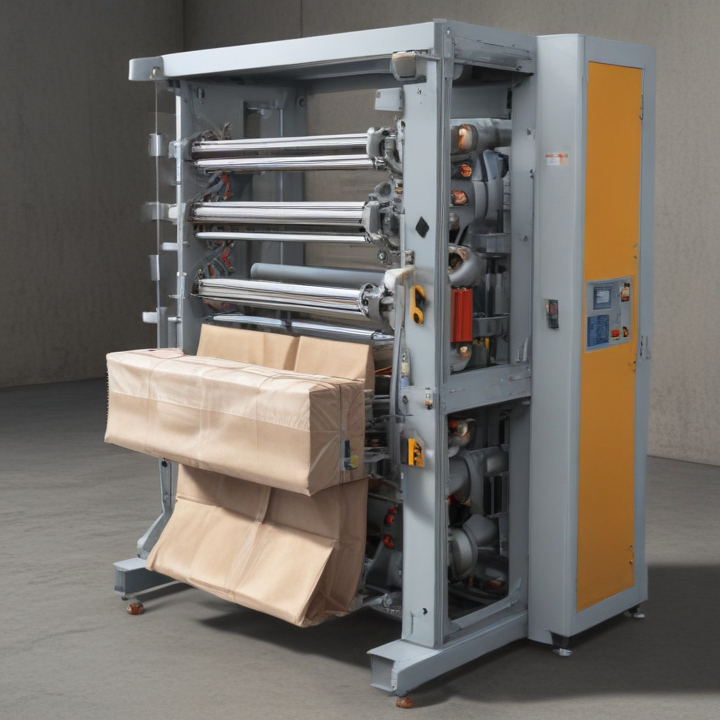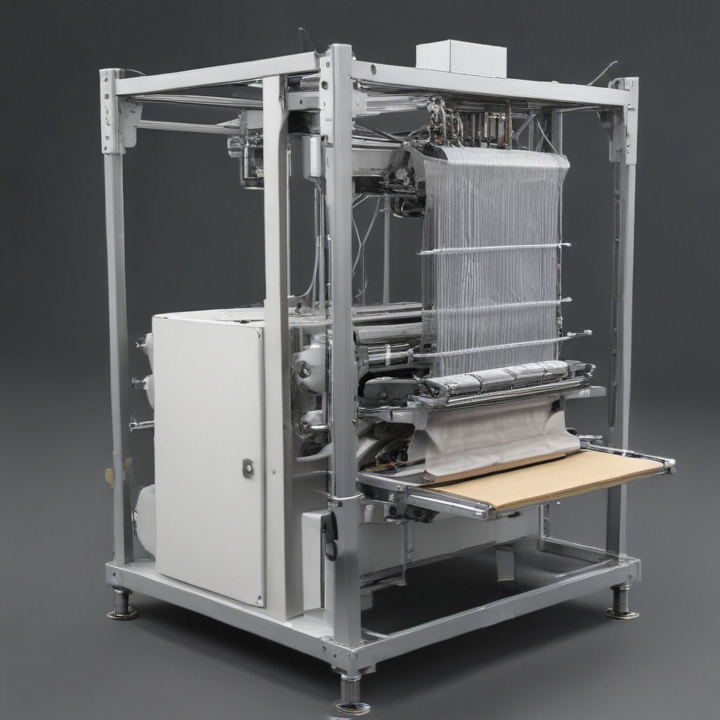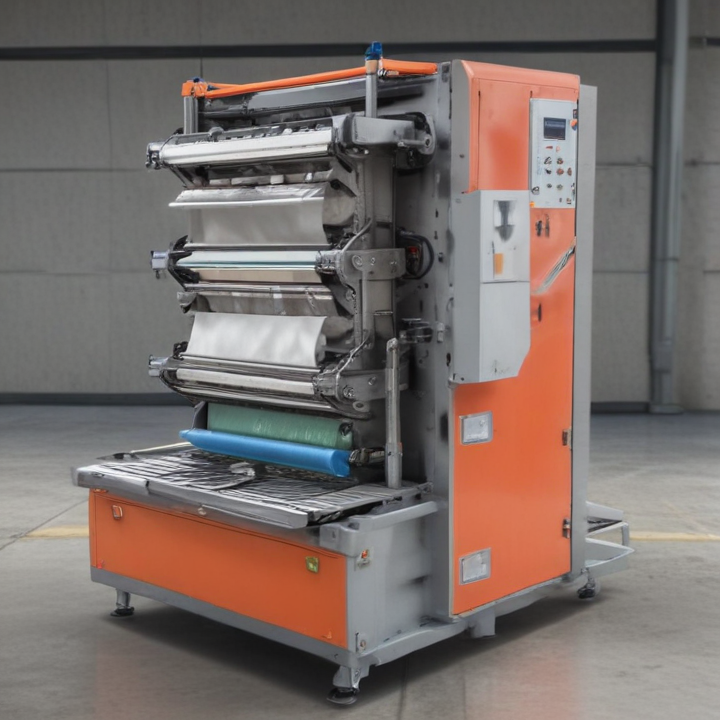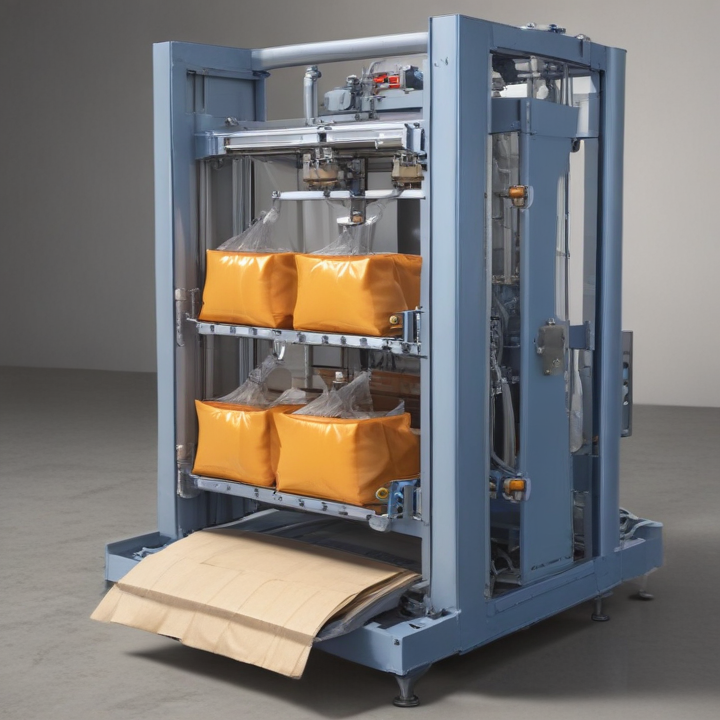List Technical Parameters of “ton bag packing machine”
A ton bag packing machine, typically used for packaging large quantities of bulk materials, primarily includes the following technical parameters:
1. Capacity: Measured in tons per hour (TPH). Defines how much material can be packed within a specified time frame.
2. Weighing Range: Defines the weight range for each bag, generally between 500 kg to 2000 kg.
3. Accuracy: Indicates the precision of the weighing system, often given as a percentage of the total weight (e.g., ±0.5%).
4. Bag Size Compatibility: Specifies the range of bag dimensions (height, width, and length) the machine can handle.
5. Material Type: Describes the type of material that can be packed, such as powders, granules, or pellets.
6. Feeding Mechanism: Details the type of feeding (gravity feed, screw feeder, belt feeder) to suit different material properties.
7. Control System: Often includes PLC (Programmable Logic Controller) with HMI (Human-Machine Interface) for ease of operation and monitoring.
8. Conveyor System: Describes the integrated conveyor belt specifications, including length, width, and speed.
9. Power Requirements: Specifies the electrical power needed, usually presented in kilowatts (kW).
10. Air Supply: Specifies the compressed air requirements, including pressure and flow rate.
11. Discharging Mechanism: Describes the methods used to discharge the packed bags, such as automatic or manual removal.
12. Dust Control: Indicates measures for managing dust, often through dust collectors or enclosed systems.
13. Construction Material: Usually made from stainless steel or robust materials to withstand heavy-duty usage.
14. Operational Temperature Range: The ambient temperature range within which the machine can operate effectively.
15. Safety Features: Includes emergency stop buttons, overload protections, and interlock systems.
Understanding these parameters helps in selecting and operating a ton bag packing machine effectively, ensuring optimal performance and longevity.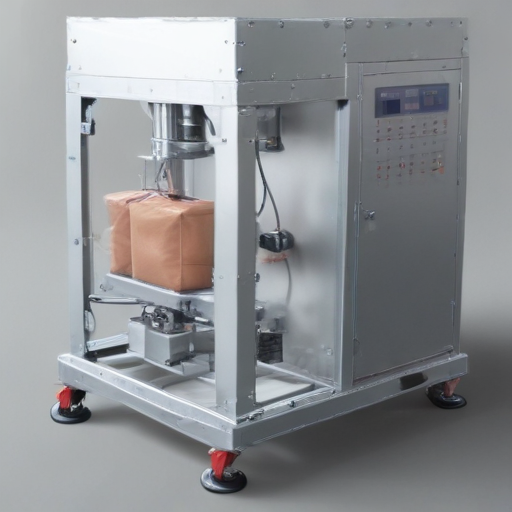
List Product features of “ton bag packing machine”
A ton bag packing machine is specialized equipment designed to fill large bags, typically known as bulk bags, jumbo bags, or FIBCs (Flexible Intermediate Bulk Containers). Here are the key product features of a ton bag packing machine:
1. High Capacity Handling:
– Capable of filling bags ranging from 500kg to 2000kg.
– Suitable for various bulk materials such as powders, granules, and pellets.
2. Automated Weighing System:
– Integrated with high-precision load cells for accurate weight measurement.
– Tare and gross weigh functionalities to ensure precise filling.
3. Adjustable Filling Speed:
– Variable speed control to optimize throughput and efficiency.
– Ensures minimal spillage and waste during the filling process.
4. Dust Control Mechanisms:
– Equipped with dust extraction systems for a cleaner work environment.
– Hermetically sealed filling spout minimizes dust emissions.
5. User-Friendly Interface:
– Intuitive control panel for easy operation.
– Programmable logic controller (PLC) with touch screen interface to set parameters and monitor the process.
6. Sturdy Construction:
– Constructed from robust materials such as stainless steel or heavy-duty carbon steel.
– Designed to withstand harsh industrial environments.
7. Versatile Bag Handling:
– Adaptable to various bag sizes and shapes.
– Features bag loops or hooks for secure bag attachment and easy maneuverability.
8. Safety Features:
– Emergency stop buttons and safety guards to prevent accidents.
– Overload protection mechanisms to ensure safe operation.
9. Compatibility with Material Handling Systems:
– Integrates seamlessly with conveyors, palletizers, and forklifts.
– Streamlines the bulk material packaging process for higher productivity.
10. Low Maintenance Requirements:
– Designed for easy access to components for routine maintenance.
– Durable parts minimize downtime and prolong machine lifespan.
11. Energy Efficiency:
– Optimized power consumption for cost-effective operation.
– Some models come with energy-saving features.
These features combined make ton bag packing machines an essential tool in industries like agriculture, chemicals, construction, and mining, where efficient, precise, and large-scale material handling is critical.
List Application of “ton bag packing machine”
Ton bag packing machines, also known as Jumbo bag filling machines or FIBC (Flexible Intermediate Bulk Container) filling machines, are specialized equipment used for efficiently and effectively packing large volumes of bulk materials into heavy-duty bags. Here are some applications of these machines:
1. Agriculture:
– Grains and Seeds: Packaging grains such as wheat, rice, and corn.
– Fertilizers: Packing various types of fertilizers for ease of transport and distribution.
– Animal Feed: Efficiently filling feed materials for livestock.
2. Construction:
– Sand and Gravel: Bulk packaging for easy transport to construction sites.
– Cement and Concrete Mix: Ensuring precise quantities for construction projects.
3. Mining:
– Minerals and Ores: Packaging bulk materials like coal, iron ore, and other minerals.
– Chemicals: Safely packing chemical powders and granules used in mining processes.
4. Food Processing:
– Sugar and Salt: Bulk packaging for food processing units and wholesale distribution.
– Flour: Efficiently packing large quantities for bakeries and food manufacturers.
5. Chemicals:
– Powders and Granules: Packing various chemical powders used in industrial processes.
– Resins and Plastic Pellets: Facilitating the handling and transportation of raw materials for plastic manufacturing.
6. Pharmaceuticals:
– Active Pharmaceutical Ingredients (APIs): Ensuring safe and precise packaging of bulk pharmaceutical materials.
7. Recycling:
– Scrap Materials: Efficiently packing scrap metal, plastics, and paper for recycling operations.
8. Livestock and Poultry:
– Feed Ingredients: Packaging bulk feed ingredients for ease of distribution.
9. Environmental Management:
– Waste Materials: Packing hazardous or non-hazardous waste for safe transportation and disposal.
Ton bag packing machines are integral in industries that require bulk handling, providing efficient, accurate, and safe packaging solutions, thereby improving operational efficiency and reducing labor costs.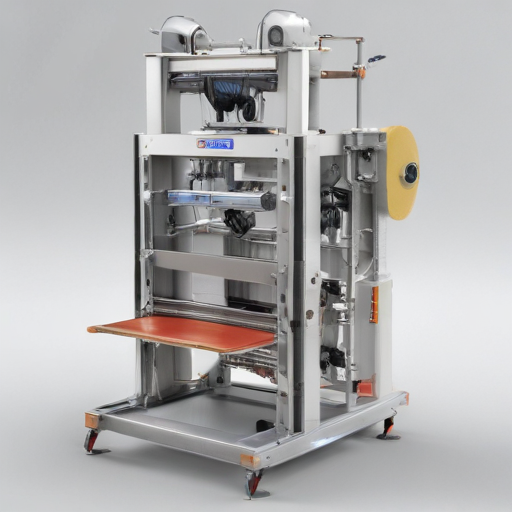
List Various Types of “ton bag packing machine”
Ton bag packing machines, also known as jumbo bag filling machines or FIBC (Flexible Intermediate Bulk Container) bagging machines, are specialized equipment designed for filling large bags, typically holding 500 to 2000 kilograms of material. Here are various types:
1. Gravity-Fed Ton Bag Packing Machine:
Utilizes gravity to feed materials into the bag. Ideal for free-flowing materials like grains or powders.
2. Air Flow Ton Bag Packing Machine:
Employs air to fluidize and transport the material into the bag. Suitable for materials with low density or in powder form.
3. Screw-Fed Ton Bag Packing Machine:
Uses an auger or screw mechanism to transfer materials. Best for semi-dense and fine materials such as flour or cement.
4. Impeller-Fed Ton Bag Packing Machine:
An impeller forces materials into the bag. It’s perfect for very fine powders and ensures minimal dust emission.
5. Belt-Fed Ton Bag Packing Machine:
A conveyor belt system feeds the material into the bag, making it versatile for various material types, including pellets, granules, and flakes.
6. Bulk Bag Filling Station:
Often incorporates modular designs with various feeding mechanisms. Can have weigh hoppers, dust control units, and vibratory tables for enhanced accuracy.
7. Net Weight Ton Bag Packing Machine:
Weighs the material before filling it into the bag, ensuring precise weight control for each bag.
8. Gross Weight Ton Bag Packing Machine:
Fills and weighs the bag simultaneously. This type is efficient and has a simpler design compared to net weight machines.
9. Automatic Ton Bag Packing Machine:
Fully automated with features like automatic bag placement, filling, weighing, and sealing. Ideal for high-throughput operations.
10. Manual Ton Bag Packing Machine:
Requires manual handling to position the bags but includes automated filling systems. Suitable for lower-volume applications.
11. Vacuum Packing Machine:
Utilizes a vacuum to pull air out and ensure a compact fill. Ideal for materials that need to minimize air content.
These machines can be tailored to specific materials and industry requirements, providing efficient, accurate, and dust-free bagging solutions.
Custom Manufacturing Options for ton bag packing machine
Custom manufacturing options for ton bag (FIBC) packing machines play a crucial role in meeting specific industrial packaging needs. Here are key customization options:
1. Weighing Systems:
– Load Cell Integration: High-precision load cells for accurate weight measurement.
– Multi-Range Weighing: Configurable for various weight ranges, from small to bulk loads.
2. Filling Mechanisms:
– Free-Flowing Materials: Customizable hoppers and gravity-fed systems.
– Non-Free-Flowing Materials: Mechanical or pneumatic feeders for materials like powders or granules.
3. Material Handling:
– Variable Hopper Sizes: Custom hopper capacities to suit specific material volumes.
– Conveyor Belts: Integration of custom conveyor systems for automated material feeding.
4. Bag Handling:
– Custom Clamping Systems: Adjustable clamps and frames for various bag sizes and designs.
– Automatic Bag Release: Automated systems for bag removal to improve process efficiency.
5. Control Systems:
– PLC Integration: Programmable Logic Controllers for advanced automation and process control.
– HMI Panels: Touchscreen controls for easy operation and monitoring.
6. Dust Control:
– Dust Collection Systems: Custom-built dust extraction units to maintain a clean working environment.
– Sealed Filling Chambers: To minimize airborne particulates.
7. Construction Materials:
– Stainless Steel: For industries requiring high hygiene standards, like food or pharmaceuticals.
– Corrosion-Resistant Materials: For handling chemically aggressive substances.
8. Portability and Flexibility:
– Mobile Units: Custom designs with wheels or tracks for easy movement within facilities.
– Modular Designs: Systems that can be adapted or expanded as per future needs.
9. Integration Capabilities:
– ERP/MES Systems: Custom interfaces for seamless integration into existing Enterprise Resource Planning or Manufacturing Execution Systems.
By leveraging these custom manufacturing options, ton bag packing machines can be tailored to enhance efficiency, accuracy, and adaptability across diverse industrial applications.
List Quality Control and The Manufacturing Process of “ton bag packing machine”
### Quality Control
1. Material Inspection
– Incoming Inspection: Inspect raw materials (steel, electrical components) for compliance with specifications.
– Documentation: Verify material certificates and documentation.
2. In-Process Inspection
– Dimensional Checks: Use gauges and measuring tools to confirm parts meet design dimensions.
– Welding Quality: Inspect welds for defects using non-destructive testing (NDT) methods.
– Assembly Verification: Ensure sub-assemblies are correctly assembled and function properly.
3. Final Testing
– Operational Test: Run the machine through its entire cycle to ensure all parts operate correctly.
– Load Test: Simulate working conditions to verify the machine can handle specified loads.
– Electrical Safety: Conduct electrical tests to ensure compliance with safety standards.
4. Documentation
– Quality Reports: Generate and review quality control reports.
– Traceability: Maintain records for traceability of materials and components.
### Manufacturing Process
1. Design and Engineering
– Concept Development: Design machine based on customer requirements and industry standards.
– Prototyping: Develop prototype and validate the design.
2. Material Procurement
– Supplier Selection: Choose reliable suppliers for quality raw materials.
– Order Placement: Order and manage arrival of quality materials.
3. Fabrication
– Cutting and Machining: Cut, shape, and machine components according to design specifications.
– Welding and Joining: Weld and join parts, ensuring structural integrity.
4. Assembly
– Sub-Assembly: Prefabricate sub-assemblies like frame, control panels, and conveyor systems.
– Main Assembly: Integrate sub-assemblies into the main structure of the packing machine.
5. Painting and Finishing
– Surface Preparation: Clean and prepare surfaces for painting or coating.
– Application: Apply protective coatings for corrosion resistance and durability.
6. Quality Control and Testing
– QC Inspection: Conduct thorough inspections at each stage.
– Functional Testing: Ensure the machine operates as intended and meets safety standards.
7. Packaging and Shipping
– Final Inspection: Perform a final quality check.
– Safe Packaging: Pack and secure the machine for transportation.
– Logistics Management: Coordinate shipping and delivery to the customer.
By focusing on stringent quality control measures and a detailed, methodical manufacturing process, a manufacturer can ensure the production of reliable and efficient ton bag packing machines.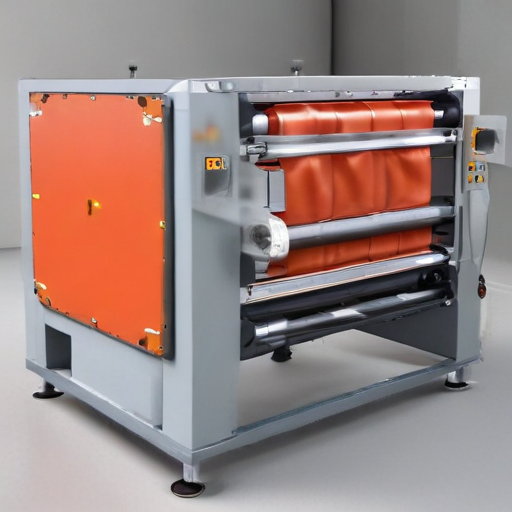
How to use “ton bag packing machine”
A ton bag packing machine streamlines the bulk material packaging process, ensuring efficiency and consistency. Here’s a step-by-step guide to using it:
1. Preparation:
– Ensure the machine is set up on a stable and leveled surface.
– Verify that the machine is properly connected to power and any necessary utilities.
– Check that the ton bags (also known as bulk bags or FIBCs) are available and undamaged.
2. Initial Setup:
– Calibrate the weighing system to ensure accurate measurements by inputting the desired filling weight.
– Adjust the bag-holding frames and hooks to fit the size of the ton bags you are using.
3. Bag Placement:
– Position the empty ton bag under the filling spout. Secure the bag’s loops onto the holding frames or hooks.
– Ensure the bag spout is properly aligned with the filling spout to prevent spillage.
4. Filling Process:
– Initiate the filling process by starting the machine manually or using automatic settings if available.
– Monitor the filling process to ensure that the material flows smoothly into the bag.
– The machine will automatically stop once the preset weight is reached.
5. Sealing the Bag:
– Once filled, detach the bag from the holding frames/hooks.
– Securely tie or seal the bag spout to prevent material leakage.
6. Transporting the Filled Bag:
– Carefully remove the filled ton bag from the machine area.
– Use appropriate lifting equipment, such as a forklift, to transport the sealed bag to storage or shipping.
7. Maintenance and Safety:
– Regularly inspect the machine for any wear and tear.
– Follow all safety guidelines to prevent accidents, including wearing protective gear.
By following these steps, you ensure efficient and safe operation of the ton bag packing machine, optimizing your bulk material handling process.
List Properties and Terms of “ton bag packing machine”
A ton bag packing machine, also known as a jumbo bag filling machine or bulk bag filler, is a specialized piece of equipment designed for efficient and precise filling of large bags, typically ranging from 500 kg to 2000 kg in capacity. These machines are essential in industries that handle bulk materials such as mining, chemicals, agriculture, and construction.
### Properties:
1. Capacity:
– Handles weights from 500 kg to 2000 kg.
– Adjustable filling weights for different product requirements.
2. Accuracy:
– High-precision load cells for accurate weight measurement.
– Ensures consistent weight for each filled bag.
3. Speed:
– Variable speed filling mechanisms.
– Capable of high throughput depending on the material and machine model.
4. Automation:
– Often equipped with PLC (Programmable Logic Controller) for automated processes.
– Can include automatic bag placement, filling, and sealing.
5. Material Compatibility:
– Suitable for powders, granules, and flakes.
– Often has customizable features to handle different material types.
6. Construction:
– Robust and durable build, typically with stainless steel for contact parts.
– Designed to withstand harsh industrial environments.
### Terms:
1. Bulk Density: Refers to the mass of the material per unit volume, impacting how the machine needs to handle and fill the bags.
2. Load Cells: Sensors used to measure the weight of the material being filled to ensure accuracy.
3. PLC (Programmable Logic Controller): A digital computer used for automation of electromechanical processes, improving efficiency and control.
4. Screw Feeder: A mechanism that uses a rotating helical screw blade to move granular or powdered material for precise filling.
5. Dust Collection System: Integrated or external systems designed to manage and minimize dust generated during the filling process.
6. Fill Spout: The nozzle or channel through which the material is dispensed into the bag.
7. Vibration Table: Used to compact the material within the bag to increase packing efficiency and stability.
8. Bag Inflation System: Inflates the bag to ensure proper filling and shape retention during the process.
By understanding these properties and terms, industries can select the appropriate ton bag packing machine to optimize their bulk material handling processes.
List The Evolution history of “ton bag packing machine”
The evolution of the ton bag packing machine, or bulk bag filler, reflects advancements in industrial automation and material handling over the decades. Here’s a concise history:
1. 1960s – Introduction of Bulk Handling:
– Initial bulk bag fillers were rudimentary, involving manual or semi-automated processes for filling large sacks. These systems were labor-intensive and prone to inefficiencies.
2. 1970s-1980s – Basic Automation:
– The incorporation of basic automated controls, such as timers and weight sensors, began improving accuracy and reducing human labor. Pneumatic and mechanical systems assisted in bag handling and filling.
3. 1990s – Industrial Advancements:
– Introduction of PLC (Programmable Logic Controllers) revolutionized bulk bag fillers. Enhanced control over filling processes increased precision and efficiency. Load cells and advanced weighing systems became standard, ensuring better accuracy in filled weights.
4. 2000s – Integration and Customization:
– Systems became more integrated, with automated dust control and spillage prevention mechanisms. Customizable features emerged to cater to different industries, such as food, chemicals, and building materials. Remote monitoring and diagnostics improved maintenance and operational reliability.
5. 2010s – Smart Technology:
– Incorporation of smart technologies like IoT (Internet of Things) allowed for real-time data collection and analytics. Machines could now communicate with other systems in a factory, enabling optimized workflow and predictive maintenance.
6. 2020s – Advanced Automation and Sustainability:
– Innovations in AI and robotics further enhanced precision, efficiency, and ease of use. Focus on sustainability led to designs that minimize waste and energy consumption. Enhanced safety features were integrated to protect operators.
Today, ton bag packing machines are highly sophisticated, combining various advanced technologies to provide efficient, accurate, and reliable solutions for bulk material handling across various industries.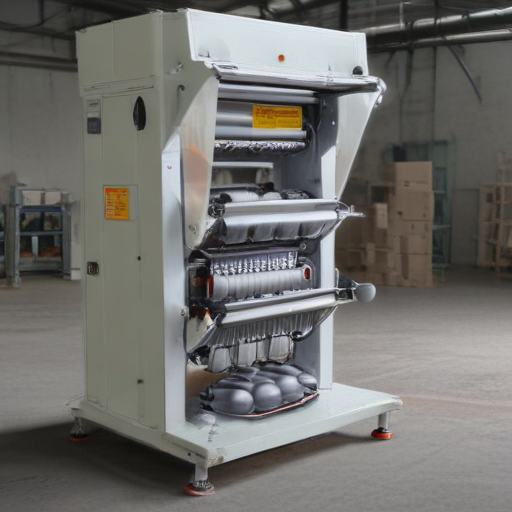
How to Select a Reliable ton bag packing machine
Selecting a reliable ton bag packing machine requires a systematic approach to ensure it meets your operational needs and provides long-term value. Here’s a concise guide:
1. Identify Requirements:
– Capacity: Determine the weight range and capacity your operations require (e.g., 500kg to 2000kg).
– Material Type: Consider the type of material being packed (powder, granules, etc.), as certain machines handle specific materials better.
2. Research Manufacturers:
– Reputation: Look for manufacturers with strong reputations and positive reviews.
– Experience: Prefer companies with extensive experience in designing and manufacturing packing machines.
3. Technical Specifications:
– Accuracy and Precision: Check the machine’s weighing accuracy to minimize discrepancies.
– Speed: Ensure it matches your operational speed requirements.
– Ease of Operation: Evaluate the user interface and control systems.
4. Material Compatibility:
– Ensure the machine’s material contact parts are compatible with the products being packed to prevent contamination and ensure durability.
5. Durability and Build Quality:
– Inspect the build quality and materials used. Machines constructed from high-quality stainless steel offer better durability and hygiene.
6. Maintenance and Support:
– Ease of Maintenance: Choose machines with fewer moving parts and easy access for maintenance.
– After-Sales Support: Ensure the manufacturer provides robust after-sales support, including training, spare parts, and service.
7. Customization:
– Check if the manufacturer offers customization options to tailor the machine to your specific needs (e.g., integration with existing systems).
8. Compliance:
– Ensure the machine complies with relevant industry standards and certifications (e.g., CE, ISO).
9. Cost vs. Value:
– Balance the initial investment with the long-term benefits, considering factors like energy efficiency, reduced downtime, and lower maintenance costs.
Final Tip: Request demonstrations and consult with industry peers to gather firsthand feedback. This will help ensure the machine you choose is both reliable and efficient for your specific application.
List “ton bag packing machine” FAQ
Certainly! Here’s a concise list of frequently asked questions (FAQ) related to “ton bag packing machines”:
### 1. What is a Ton Bag Packing Machine?
A ton bag packing machine is a type of industrial equipment designed for automatically filling and sealing large bags, commonly referred to as “big bags” or “bulk bags,” which can hold up to one ton of material. These machines are widely used in industries such as agriculture, construction, and mining.
### 2. What Materials Can Be Packed Using a Ton Bag Packing Machine?
Ton bag packing machines can handle a variety of materials, including powders, granules, pellets, and flakes. Common materials include cement, minerals, fertilizers, grains, and plastic products.
### 3. How Does a Ton Bag Packing Machine Work?
The machine typically includes a weighing system, a filling spout, and a bag hanging and removal mechanism. The operator places the empty ton bag onto the filling spout, the machine dispenses the material until the desired weight is achieved, and then the bag is sealed and removed.
### 4. What are the Key Features of a Ton Bag Packing Machine?
– Accuracy: High precision in weighing and filling.
– Speed: Efficient filling rates to suit high-volume operations.
– Automation: Options for fully or semi-automated operations.
– Safety: Integrated safety mechanisms to protect operators.
– Versatility: Adjustable settings to handle different bag sizes and materials.
### 5. What Maintenance is Required?
Routine maintenance includes regular cleaning, checking and calibrating weighing systems, inspecting mechanical parts for wear and tear, and ensuring electrical components are functioning correctly.
### 6. Can the Machine Handle Different Bag Sizes?
Yes, most ton bag packing machines come with adjustable settings to accommodate various bag dimensions and weights, typically ranging from 500 kg to 2000 kg.
### 7. What Are the Benefits of Using a Ton Bag Packing Machine?
– Efficiency: Speed up the packing process and increase productivity.
– Consistency: Ensure uniform filling and minimize material wastage.
– Labor Savings: Reduce the need for manual handling and labor costs.
### 8. How Do I Choose the Right Ton Bag Packing Machine?
Factors to consider include the type of material you’re packing, desired filling speed, bag size range, level of automation, and specific industry requirements.
### 9. What Are the Initial Setup Requirements?
Setup usually requires adequate space, power supply, material feeding systems, and sometimes compressed air. Training for operators is also recommended.
### 10. Are There Any Safety Concerns?
Ensure the machine complies with safety standards; operators should be trained in handling and emergency procedures, and all safety mechanisms should be functional.
Top 10 FAQ with answer about ton bag packing machine for Buyer Sourcing from China
1. What is a ton bag packing machine?
A ton bag packing machine, also known as jumbo bag or big bag filling machine, is designed for filling and weighing large bulk bags, typically ranging from 500 kg to 2000 kg, used in industries like chemicals, minerals, and food processing.
2. What types of ton bag packing machines are available in China?
Chinese manufacturers offer various types including automated, semi-automated, and manual machines, with options for different filling materials like powder, granules, and pellets.
3. How accurate are these machines in weighing?
Chinese ton bag packing machines generally offer high accuracy, with measuring precision typically within ±0.5% to ±1%, depending on the model and application.
4. What level of automation do these machines possess?
Available automation levels range from fully automated systems that require minimal human intervention to semi-automated and manual machines that need more operator involvement.
5. Are these machines customizable?
Yes, many Chinese manufacturers provide customization options to meet specific requirements, such as different bag sizes, material types, and integration with existing systems.
6. What is the average lead time for purchasing from China?
Lead times can vary but generally range from 30 to 60 days, depending on the complexity of the machine and the manufacturer’s production schedule.
7. What certifications do Chinese ton bag packing machines carry?
Many machines are compliant with international standards like ISO, CE, and even ATEX for explosive environments.
8. What is the typical warranty period?
Warranty periods usually range from 12 to 24 months, offering protection against manufacturing defects and ensuring performance reliability.
9. How is support and training provided?
Manufacturers often provide comprehensive support, including detailed manuals, online troubleshooting, and training sessions either on-site or via video conferencing.
10. Can I get spare parts and after-sales service?
Yes, reputable Chinese manufacturers usually have a robust supply chain for spare parts and provide after-sales services such as maintenance support and remote diagnostics.
These FAQs provide a succinct overview for potential buyers, helping them make informed decisions when sourcing ton bag packing machines from China.

